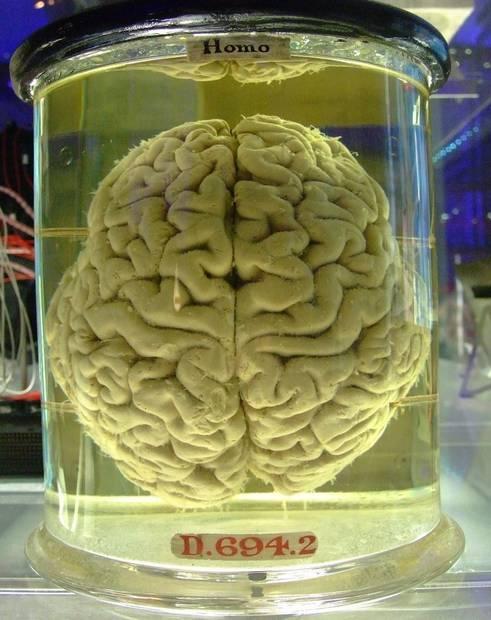Brain preserved in formaldehyde. — Gaetan Lee (CC BY 2.0)
You hear a lot about “organic” or semi-organic computing. It’s generally considered to be a necessary step for AI and future computing. Getting this idea off the ground is the main issue.
We now have a serious step forward courtesy of Monash University. The new nanofluidic chip has been unveiled with a commendable lack of hype and some very solid electronic credentials. This is a metal organic framework, a no ifs and buts working model, as published in Phys.org on the above link and Science Advances.
The outcome is a very elegant layout of a chip with the ability to “remember previous signals”. That’s a neural capability. If you just stampeded dutifully to the expression “neural networks”, bingo.
There’s an inherent level of added efficiency in this approach. Nano means much less energy demand, too. This thing is already solving problems before it gets on the market.
A nanofluid is a solution. It can be composed of any range of materials. In this case, it manages protons from “non-linear” sources. That means it manages inputs of whatever values from sources. Protons, of course, mean positive charges. Hence the very high electronic range of uses this chip can clearly manage. It mimics the Off and On switches in transistors, too, meaning it can easily dovetail with binary codes.
If you’d like to spend a few centuries pondering the possible applications of this idea, that’s exactly what you’ll be doing. So will the entire tech sector, if it has a working brain cell that needs something to do. There are any number of functional upsides to this chip and its likely descendants.
In a slightly circuitous way, it reminds me of the fascinating Dishbrain, the enterprising neural tissue that learned to play Pong. We are developing an ongoing avalanche of organic elements in computing.
A lot of people will love this, with good reason. It’s a major problem solver for advanced circuitry, core functions, and much higher efficiency at lower energy costs. There are any number of applications for future tech.
Even to scale, a coin-sized chip has a lot going for it. It’s much easier to handle. The chip’s almost Baroque symmetrical structure makes it pretty easy to work with.
Watch this tech. It’s a very unambiguous large step in all the right directions.

